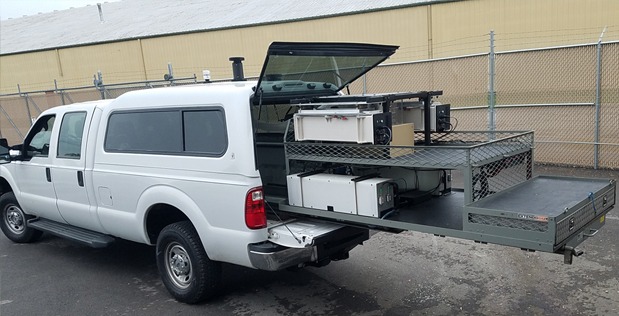
In collaboration with the Indianapolis Metropolitan Police Department (IMPD), the Defense Advanced Research Projects Agency’s (DARPA) SIGMA+ program announced Friday it had recently concluded a three-month-long pilot study of sensors intended to support early detection of weapons of mass destruction (WMD) threats.
The pilot involved integrating the highly sensitive chemical, biological, radiological/nuclear, and explosive sensors in several IMPD vehicles and using them to gather real-world environmental data over a large part of the Indianapolis metropolitan region.
“The Indianapolis pilot study and field testing marked the first time we were able to demonstrate the integration of cutting-edge SIGMA+ sensor technology across the entire CBRNE threat space into a law-enforcement (LE) vehicle,” said Mark Wrobel, SIGMA+ program manager in DARPA’s Defense Sciences Office. “This included air sampling, power, and the user interface that provides the vehicle operator real-time analysis of potential threats via a tablet. The ultimate goal is to outfit a citywide fleet of LE or other public service vehicles to enable a continuously refreshed mobile network that can detect WMD threats with low false-alarm rates across a city or region.”
The study consisted of two week-long exercises that supplemented a previous August 2020 event. Environmental data collected during the study is being used to map the naturally occurring chemical and biological backgrounds of Indianapolis’ urban areas that result from business, industries, and environmental patterns. That data will support the development of both sensors and algorithms to minimize false positives and maximize detection of anomalies associated with threat activities. During the study, nuisance alarms were suppressed by 75 percent.
DARPA said it also worked with IMPD to understand how SIGMA+ sensor systems could support broader law enforcement needs by holding workshops to address current sensor and analytics capabilities and how those capabilities could address areas like detecting narcotics manufacturing.




